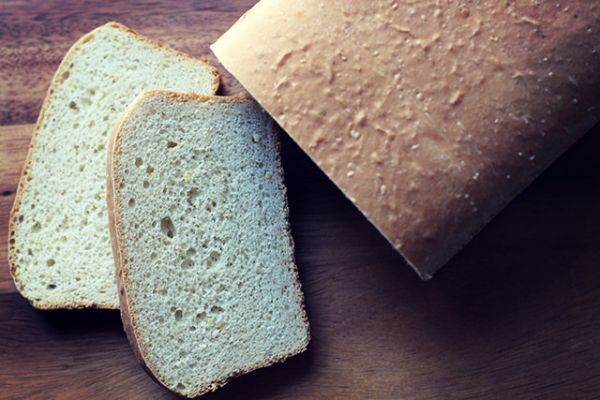
You
may have some older relatives that get all nostalgic about salt-rising
bread. You don’t see it much anymore, because it’s hard to make and not
all that popular among anyone who wasn’t raised with it. The smell is
described like either cheese or dirty socks. But those who love it
really love it. Salt-rising bread doesn’t even have salt in it, and no
one is sure how the name came about. It was made by pioneering American
women who didn’t have access to yeast, and who didn’t always have
sourdough starter ready. They made salt-rising bread rise with
environmental bacteria. Yes, they did.
In the early
20th century, this lengthy, yeast-less process also became an interest
of microbiologists. In 1914, Richard N. Hart noted in his book Leavening
Agents that salt-rising bread “seems to fail in a well-sterilized
room," and alludes to the experiments of Henry A. Kohman, who discovered
that salt-rising dough lacked yeast completely “but literally swarmed
with bacteria.”
In 1910 Kohman was funded by the aforementioned
bread-obsessed Kansas Governor, Walter R. Stubbs, to learn how bakers
may reliably make it, and concluded that a variety of anaerobic bacteria
allowed the bread to rise. In 1923, microbiologist Stuart A. Koser
began to suspect the mix might include bacteria found in human
intestines and wounds.
The experiments Kohman did
after that might make you a little queasy, but the fact is that not a
single case of food poisoning has been attributed to salt-rising bread.
Read what we know about this classic bread, including instructions for making your own starter, at Atlas Obscura.
 You
may have some older relatives that get all nostalgic about salt-rising
bread. You don’t see it much anymore, because it’s hard to make and not
all that popular among anyone who wasn’t raised with it. The smell is
described like either cheese or dirty socks. But those who love it
really love it. Salt-rising bread doesn’t even have salt in it, and no
one is sure how the name came about. It was made by pioneering American
women who didn’t have access to yeast, and who didn’t always have
sourdough starter ready. They made salt-rising bread rise with
environmental bacteria. Yes, they did.
You
may have some older relatives that get all nostalgic about salt-rising
bread. You don’t see it much anymore, because it’s hard to make and not
all that popular among anyone who wasn’t raised with it. The smell is
described like either cheese or dirty socks. But those who love it
really love it. Salt-rising bread doesn’t even have salt in it, and no
one is sure how the name came about. It was made by pioneering American
women who didn’t have access to yeast, and who didn’t always have
sourdough starter ready. They made salt-rising bread rise with
environmental bacteria. Yes, they did.
No comments:
Post a Comment